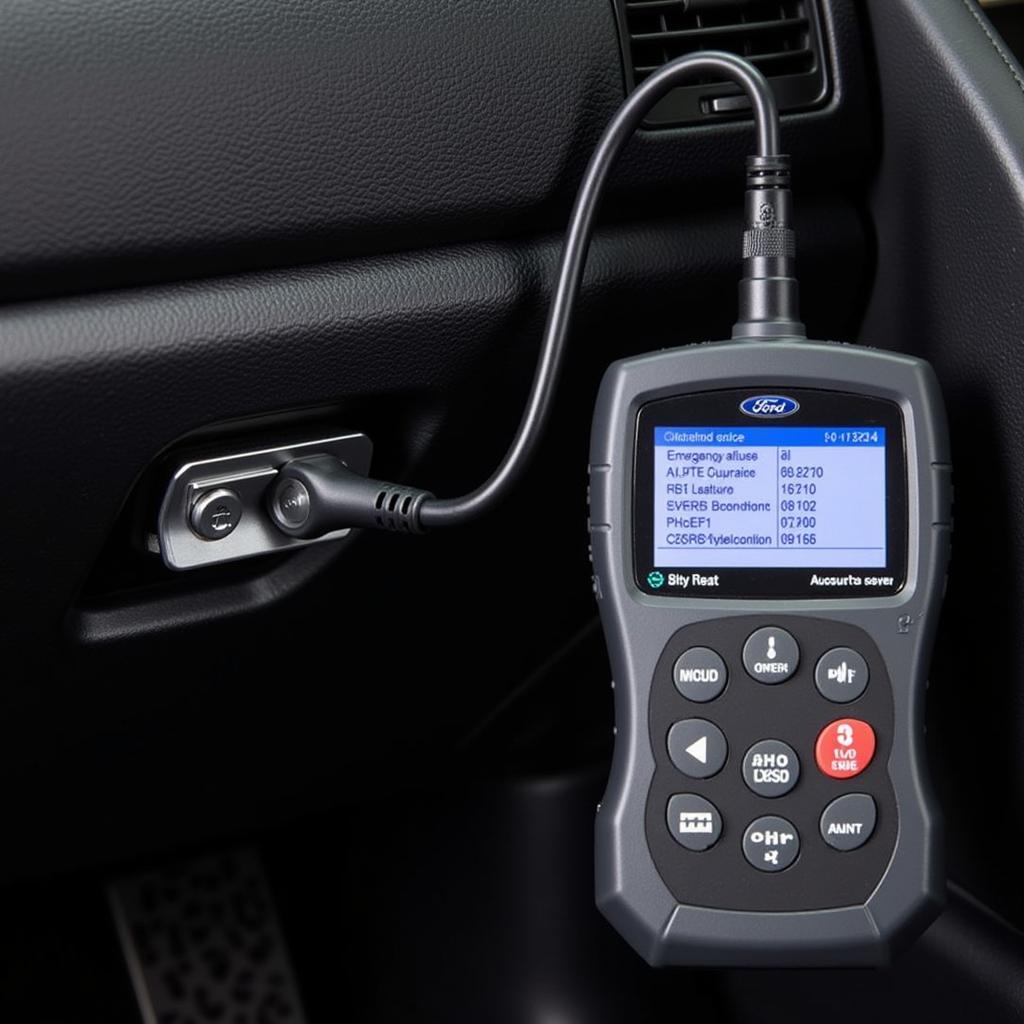The dreaded brake pad warning light on your 2004 BMW 330 is a signal you can’t afford to ignore. It typically means your brake pads have worn down and need replacement. Ignoring this warning can lead to costly repairs and compromise your safety on the road. This comprehensive guide will walk you through understanding the warning light, diagnosing the issue, and exploring your options for a solution.
Understanding Your BMW’s Brake Pad Warning System
Your BMW is equipped with a sensor system designed to alert you when your brake pads reach a critical wear point.
- How it works: A small sensor, embedded within the brake pad material, makes contact with the brake rotor when the pad wears thin. This contact completes a circuit, triggering the warning light on your dashboard.
- Don’t Panic, but don’t delay: While the warning light’s illumination doesn’t necessarily signify immediate danger, it’s crucial to address the issue promptly.
Diagnosing the Problem: Is it Really the Brake Pads?
While the brake pad warning light is primarily associated with worn brake pads, other factors can sometimes trigger it.
Possible Culprits:
- Worn Brake Pad Sensors: The sensors themselves can wear out or become damaged over time, triggering a false warning.
- Electrical Issues: A faulty wiring harness or a malfunctioning brake light switch can disrupt the sensor circuit, leading to an inaccurate warning light.
- Brake Fluid Level: Low brake fluid, often caused by a leak in the system, can also trigger the brake pad warning light in some BMW models.
Investigating the Issue:
- Check Your Brake Fluid: Before assuming it’s the brake pads, start by inspecting your brake fluid reservoir. If the fluid level is low, there might be a leak that needs immediate attention.
- Visual Inspection of Brake Pads: If possible, take a look at your brake pads through the spaces between the wheel spokes. Thin brake pads (less than 1/4 inch of friction material) are a clear indication that replacement is needed.
Addressing the Brake Pad Warning Light
Once you’ve determined the cause of the warning light, you have several options for addressing the issue:
1. Brake Pad Replacement: If your inspection reveals worn brake pads, it’s time for a replacement.
- DIY or Professional? Replacing brake pads is a task many car enthusiasts tackle themselves. However, it requires some mechanical skill and specialized tools. If you’re not comfortable with the process, it’s best left to a qualified mechanic.
2. Brake Pad Sensor Replacement: If you find that your brake pads are fine, but the sensors are damaged or worn, you can replace the sensors separately.
- Sensor Compatibility: Make sure to purchase sensors specifically designed for your 2004 BMW 330 model to ensure proper fit and function.
3. Addressing Other Issues:
- Electrical Faults: If you suspect an electrical issue, such as a faulty wiring harness or brake light switch, you’ll need to consult a qualified mechanic for diagnosis and repair. These issues can be complex and require specialized knowledge.
- Brake Fluid Leak: If you discover a brake fluid leak, it’s crucial to address it immediately. Driving with a brake fluid leak is incredibly dangerous. Take your BMW to a trusted mechanic or dealership for a thorough inspection and repair.
Preventing Future Brake Pad Warning Light Issues
Proactive maintenance is key to preventing premature brake pad wear and potential issues with your brake warning system:
- Regular Brake Inspections: Aim to inspect your brakes at least once a year, or more frequently if you drive in harsh conditions or engage in heavy braking.
- Brake Fluid Flush: Follow your BMW’s recommended maintenance schedule for brake fluid flushes. Fresh brake fluid helps maintain optimal braking performance and can prevent corrosion within the system.
- Driving Habits: Adopt smooth braking techniques to minimize wear and tear on your brake pads. Avoid riding your brakes and anticipate stops whenever possible.
Don’t Ignore the Warning
The brake pad warning light on your 2004 BMW 330 is a safety feature you should never ignore. By understanding its meaning, diagnosing the cause, and taking appropriate action, you can ensure your BMW continues to deliver a safe and enjoyable driving experience. Remember, when it comes to brakes, it’s always better to err on the side of caution and address any concerns promptly.


